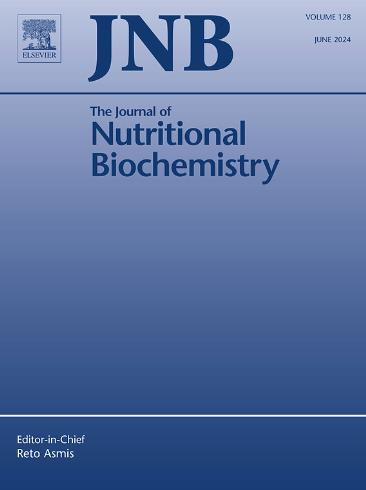The modulation of mTOR signaling on dietary carbohydrate utilization in largemouth bass (Micropterus salmoides)
IF 4.8
2区 医学
Q1 BIOCHEMISTRY & MOLECULAR BIOLOGY
引用次数: 0
Abstract
Glucose intolerance is prevalent in teleost fish species, making them prone to dietary carbohydrate-induced fatty liver disease. However, the underlying mechanism is not well understood. In the present study, the possible role of mTOR signaling in the regulation of glucose metabolism was examined in largemouth bass (Micropterus salmoides), an economically important carnivorous aquaculture species. An 8-wk feeding trial was conducted with largemouth bass, in which they were fed different isonitrogenous and isolipidic diets supplemented with leucine (Leu), rapamycin (Rap), or an mTOR activator (mTOR-S). The results demonstrated that mTOR stimulation significantly enhanced the growth performance and feed utilization, while mTOR inhibition had the opposite effect in largemouth bass. More importantly, mTOR stimulation significantly reduced plasma glucose levels and concomitantly increased insulin levels. Furthermore, mTOR stimulation increased glycolysis and TCA cycle activities, augmented hepatic ATP levels and suppressed AMPK phosphorylation. Accordingly, mTOR stimulation also reduced SREBP1 activity, decreased hepatic lipid content and increased glycogen content. These results demonstrated that mTOR stimulation could promote postprandial glucose utilization in largemouth bass. This could provide a new strategy for improving dietary carbohydrate tolerance in aquaculture feed formulation.
mTOR信号对大口黑鲈膳食碳水化合物利用的调节。
葡萄糖耐受不良在硬骨鱼类中普遍存在,使它们容易发生饮食中碳水化合物引起的脂肪肝疾病。然而,其潜在机制尚不清楚。在本研究中,研究了mTOR信号在调节大口黑鲈(Micropterus salmoides)葡萄糖代谢中的可能作用。对大口黑鲈进行了为期8周的饲养试验,分别饲喂添加亮氨酸(Leu)、雷帕霉素(Rap)和mTOR激活剂(mTOR- s)的等氮等脂饲料。结果表明,mTOR刺激显著提高了大口黑鲈的生长性能和饲料利用率,而抑制mTOR则相反。更重要的是,mTOR刺激显著降低了血浆葡萄糖水平,同时增加了胰岛素水平。此外,mTOR刺激增加糖酵解和TCA循环活性,增加肝脏ATP水平,抑制AMPK磷酸化。因此,mTOR刺激也降低了SREBP1活性,降低了肝脏脂质含量,增加了糖原含量。结果表明,mTOR刺激可促进大口黑鲈餐后葡萄糖的利用。这为提高饲料碳水化合物耐受性提供了新的策略。
本文章由计算机程序翻译,如有差异,请以英文原文为准。
求助全文
约1分钟内获得全文
求助全文
来源期刊

Journal of Nutritional Biochemistry
医学-生化与分子生物学
CiteScore
9.50
自引率
3.60%
发文量
237
审稿时长
68 days
期刊介绍:
Devoted to advancements in nutritional sciences, The Journal of Nutritional Biochemistry presents experimental nutrition research as it relates to: biochemistry, molecular biology, toxicology, or physiology.
Rigorous reviews by an international editorial board of distinguished scientists ensure publication of the most current and key research being conducted in nutrition at the cellular, animal and human level. In addition to its monthly features of critical reviews and research articles, The Journal of Nutritional Biochemistry also periodically publishes emerging issues, experimental methods, and other types of articles.
 求助内容:
求助内容: 应助结果提醒方式:
应助结果提醒方式:


